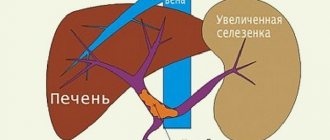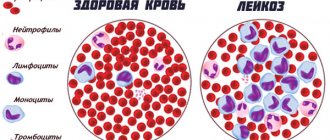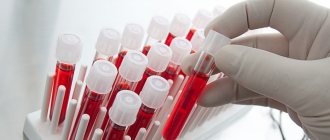Pyelonephritis
Diabetes
Hepatitis
Rheumatism
47367 October 27
IMPORTANT!
The information in this section cannot be used for self-diagnosis and self-treatment.
In case of pain or other exacerbation of the disease, diagnostic tests should be prescribed only by the attending physician. To make a diagnosis and properly prescribe treatment, you should contact your doctor. We remind you that independent interpretation of the results is unacceptable; the information below is for reference only.
Urea in the blood: indications for prescription, rules for preparing for the test, interpretation of the results and normal indicators.
What is urea
Urea is a product that is formed in the liver as a result of the synthesis of ammonia and carbon dioxide. The resulting compound is delivered by blood to the kidneys, where the filtering organ separates it from the general bloodstream and sends it into the urine.
Urea is a product unnecessary by the body, which must be completely eliminated, since its accumulation gives an osmotic effect, which can cause swelling of the internal organs in which it accumulates:
- liver;
- kidney;
- thyroid gland;
- spleen;
- pancreas.
Normally, the final product - urea - should be excreted from the body, but if there are any abnormalities in the functioning of the system, it is detected in the blood.
At what urea levels should you go to the doctor?
Any deviation from normal levels of nitrogen-containing substances in the blood is a reason to consult a doctor. A full consultation can be carried out by a therapist or nephrologist.
A specialized doctor conducts a full examination of the patient, finds out the presence of complaints, and studies the results of previous studies. For the purpose of clarification, additional tests and hardware diagnostics may be prescribed. The data from all examinations make it possible to establish the root cause of biochemical disturbances in the blood formula, a disorder in the mechanism of breakdown of nitrogenous substances and subsequent removal from the body through the excretory system.
What does urea in the blood mean?
Based on the state of the blood, namely the presence of high concentrations of urea in it, one can judge:
- the functioning of the kidneys, which are required to remove waste substances;
- about the function of the liver, which synthesizes urea from ammonia;
- about the health of muscle tissue, since the breakdown of protein in the muscles also produces urea.
Indications for testing may include:
- cardiac ischemia;
- rheumatoid arthritis;
- systemic scleroderma;
- liver diseases;
- screening results that do not fit within the normal range;
- suspected kidney infections;
- preparation for drug therapy;
- studies before hospitalization;
- assessment of the dialysis procedure performed.
Most often, an increase in urea indicates chronic or acute kidney disease. Separately, a comparative analysis is carried out for the urea content in urine and blood. If the level of the substance in the urine is lower than what is found in the blood, they speak of a disease of the filtration system - renal failure.
Urea standard in biochemical analysis (UREA)
Urea is a substance that plays a huge role in protein metabolism. The main difference between any protein is the presence of a large amount of nitrogen as a chemical element. During metabolism, this nitrogen is released, and ammonia is formed from it - one of the most toxic to the body. Having formed in the periphery, it enters the liver, where, under the action of special enzymes, it is converted into less toxic urea, which is sent to the kidneys and removed in the urine.
UREA is a key indicator of kidney excretory capacity. If their function is impaired, then this compound does not pass the kidney filter and is retained in the vascular bed. The norm is 2.5 – 8.3 mmol/l. For middle-aged people, the indicator should not exceed 6.9 - 7.2. A number of laboratories identify different upper limits for men and women: 7.1 and 6.8, respectively.
Normal values may vary depending on:
- Diet (protein-rich foods);
- Intensity of physical labor;
- Taking a number of medications (hormone therapy).
Excess may indicate:
- Renal pathology (acute inflammation and exacerbation of chronic inflammation associated with infection, intoxication, autoimmune diseases);
- Dysfunction of the urinary system associated with an obstruction to the normal outflow of urine (stones, tumors of the ureters, bladder, urethra);
- Systemic oncological processes (metastases, tumor lesions of the red bone marrow);
- Severe somatic conditions (heart and respiratory failure);
Extensive injuries (especially with muscle compression), burns, frostbite, poisoning, and severe infections also lead to an increase in concentration.
It must be taken into account that with all of the above pathology, other changes must be present in the clinical picture (characteristic symptoms, changes in related studies). An isolated increase is quite rare and requires re-determination.
A decrease in level indicates disturbances in protein and nitrogen metabolism. Sometimes this condition is more dangerous than high numbers. This is due to liver disease (cirrhosis, hepatosis, hepatitis), which is not able to neutralize ammonia and convert it into less toxic compounds. The toxin accumulates and has a pronounced negative effect.
Low values are observed in malnourished patients.
Blood must be donated when symptoms such as:
- Edema;
- Lower back pain;
- Cloudy urine or other impurities;
- Dysuric disorders (frequent, painful urination);
- Changes in general analyses.
If there is an already established diagnosis, the doctor himself determines the indications for the study. As a rule, the level of creatinine, bilirubin and total protein is determined in parallel for a comprehensive assessment of the pathological process.
Why might urea be elevated?
To determine the level of urea in the blood, a laboratory method called a biochemical blood test is used. It involves taking material from a vein. For each age category of patients there is its own norm for urea content in the blood:
- in newborns from 1.7 to 5;
- in children of the first year of life from 1.4 to 5.4;
- from one to 15 years old can have 1.8-6.7;
- women over 18 years old - from 2 to 6.7;
- men over 18 years old - from 2.8 to 8.
Several factors influence the urea content. One of which is the level of amino acids in the body, since ammonia is formed from them during metabolism, which becomes one of the components of urea. On the other hand, with a sufficient amount of amino acids, the diseased liver will not be able to synthesize urea, which will be the reason for the detection of its negligible amount. The third important factor is the performance of the kidneys, which must, by filtering the blood, extract urea from it and send it out of the body with urine.
If we exclude all possible pathologies, then we can say that the following factors not related to the disease can increase the level of urea in the blood:
- on the eve of the collection of material, severe emotional stress was experienced;
- the patient had to buy and take a drug from the list: Tetracycline, Euthyrox, Neomycin, Lasix, any drug from the group of corticosteroids or sulfonamides, anabolic steroids, steroids, salicylates;
- the patient fasted for a long time or, on the contrary, ate a lot of protein foods;
- the patient on the eve of the delivery of the material or daily subjected the body to heavy physical activity.
When a doctor tries to determine the quality of kidney function, the presence of urea in the blood may indicate:
- blockage of the urinary ducts;
- chronic. renal failure;
- glomerulonephritis;
- pyelonephritis;
- dehydration, which could be preceded by myocardial infarction, shock or heart failure.
Separately, we should highlight the reasons why urea is formed in the human body in huge quantities:
- prostate neoplasms;
- burn disease;
- severe intestinal infections;
- hematological diseases;
- state of shock.
To accurately determine the patient’s condition, it is necessary to conduct several laboratory tests in a row to see the picture in dynamics; in addition, it is necessary to measure the amount of urea in the urine in order to be able to compare this indicator with blood data.
Urea: norm and pathology
The test results are interpreted according to the patient's age and gender. Lifestyle, a number of physiological indicators and other factors are also taken into account. Only a doctor can correctly evaluate the test results.
The test is used as part of a comprehensive laboratory diagnosis of kidney and liver diseases. It must be taken into account that in some cases an increase in indicators is not a sign of pathology. For example, an increase in urea levels can be caused by eating too much protein or significant physical activity (after heavy physical work, intense sports training). A decrease in indicators is typical for pregnant women.
A significant increase in the level of this substance may indicate renal failure or disruption of the excretory system. Indicators below the reference values indicate liver pathologies and impaired protein absorption. Normally, urea levels in adult patients should be in the range of 2.1-7.1 mmol/l. For children and patients over 60 years of age, their own reference values have been established.
Symptoms indicating increased urea
Based on his feelings, the patient himself can often tell that the level of urea in the blood may be elevated. This is primarily indicated by pain in the lower back in both men and women. It indicates kidney disease.
Separately distinguished:
- swelling;
- increased amount of urine produced;
- scanty urine production;
- the presence of protein in the urine.
However, indications for donating blood for urea may be:
- ischemic diseases;
- hepatitis;
- cirrhosis;
- decreased absorption of foods;
- connective tissue diseases.
The level of urea indicates several possible pathologies at once, so this analysis is often used to monitor the patient’s condition.
Indications for the study
A blood test for urea is prescribed if the doctor suspects that the patient has kidney or liver pathologies. It is also used to monitor the progress of treatment for such diseases. The test can be administered to patients of any age, including newborns. Kidney problems can be suspected if the patient complains of swelling, sleep disturbances, weakness, decreased appetite or diuresis, pain in the lumbar region, or high blood pressure.
If indicated, the test is usually prescribed independently. In some cases, it is included in a set of studies to obtain the most complete assessment of the patient’s condition.
How to take a urea test correctly
You need to prepare for the analysis so as not to receive distorted data. First of all, you need to remember that blood is donated strictly on an empty stomach. In addition, since urea production is affected by the breakdown of muscle fibers, it is important to avoid physical activity on the eve of the test. If you can’t get to the laboratory without excessive physical activity, you need to arrive at the door of the office no later than half an hour before the appointed time in order to have time to calm down and put your nervous system in order.
If the patient is taking any medications, it is better to postpone the morning dose until the blood has already been donated. Immediately before the donation, you should not do massages, biopsies, or x-rays, especially those using contrast.
Dossier
Urea - this is how the name of this component is written in Latin. It is a solid organic compound similar to sugar crystals. This is an ingredient related to our body that regulates many processes in cells.
Urea is actively used in pharmaceuticals and cosmeceuticals. In the production of creams, its synthetic analogue is most often used - urea (the result of carbon monoxide and ammonia). It has excellent hygroscopic, antiseptic, developing, protective and healing properties.
The miracle effect is explained simply: urea is part of the water-lipid mantle, retaining moisture in the stratum corneum and intercellular space. In addition, it is able to “pull” water from deep layers, transporting it closer to the epidermis. Once on the surface of the skin as part of the cream, the ingredient works 100%, quickly and effectively coping with dryness.
In addition, urea has another important property for cosmeceuticals: it will destroy the membranes of dead cells, thereby providing an exfoliation (cleansing) effect.
What is the function of urea
Urea is a natural, essential moisturizer that is not only suitable for humans, but is also a natural component of the human body. It is able to draw moisture from the deep layers of the skin and move it closer to the upper layer of the epidermis. As a result, the appearance improves.
The high hygroscopicity of this component is capable of binding water molecules to each other, which prevents the evaporation of moisture from the surface of the epidermis. Urea also exfoliates dead skin cells, which promotes skin regeneration and healing.
View on Instagram











